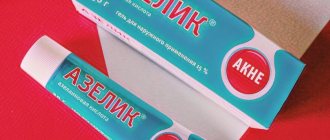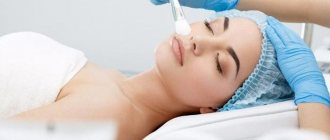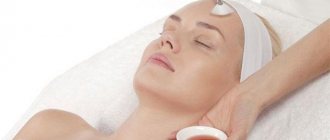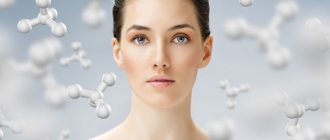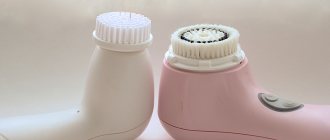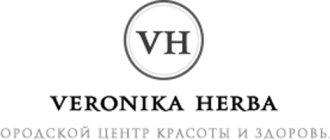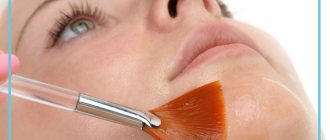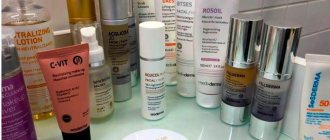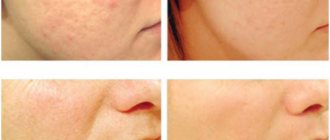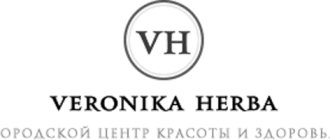The exfoliation procedure is basic in care programs for all skin types. Removing dead cells has a beneficial effect on the processes of renewal, blood flow, and rejuvenation. Superficial cleansing helps to visually refresh the color and increase the elasticity of the skin. Cosmetologists prescribe chemical compositions, selecting formulas to solve individual problems.
Thanks to peeling, you can correct many aesthetic defects and delay aging. Some of the most popular types among both specialists and patients are almond and glycolic. Which peeling is better - almond or glycolic, what are the differences and what results can be achieved, you should know before doing it.
Types of almond peeling
There are various hydroalcoholic or gel products containing this acid. The result of the procedure depends on the number of layers of the product applied. The result of using gels depends on the time the product is left on the face. Very often, in addition to mandelic acid, lactic and malic acid are used, and for oily skin, salicylic acid is often used. All these types of acids are available in pharmacies.
Almond milk skin cleansing
Lactic acid is more gentle on the skin and is also very often used for pre-moisturizing. If exfoliation is carried out with a 5% mandelic-lactic acid composition, you should not expect effectiveness. The skin will acquire a beautiful color and will be slightly moisturized, but will not remove the problem.
Apple
The composition of the skin cleansing product, which uses mandelic and malic acid in equal proportions, eliminates acne and severe acne. Almond peeling normalizes the functioning of the sebaceous glands and saturates the skin with essential vitamins. Malic acid has a large number of amino acids that affect tissue regeneration.
Treatments using malic acid, which eliminates rashes, last more than 60 minutes. Cosmetologists note that in women an allergic reaction occurs after malic acid. To do this, it must be taken in a smaller proportion.
Salicylic
Compared to other acid compositions, salicylic acid acts more aggressively. Although the almond-salicylic composition can be prescribed for minor wrinkles, acne, and also to improve complexion. It is salicylic acid that can be used to improve the skin of the hands and décolleté. Most often, this component is recommended for those who have high skin density and are not prone to irritation.
Cosmetologist's advice on choosing peeling
Choosing a cleansing method is an important and responsible moment. To choose the best option for yourself, cosmetologists insist on paying attention to the following nuances:
- Condition of the skin (excessive dryness, oiliness or problems with pimples, acne, etc.). Each type of exfoliation (glycolic or almond peels, milk, salicylic) has, in addition to cleansing, an additional effect on the skin: moisturizes, revitalizes, and has a drying quality. Compare your own skin problems and the properties of the exfoliant to increase the effectiveness of the procedure several times and choose the best option.
- Client's age. Superficial exfoliation with fruit acids is best done at a young age (20–30 years). For clients 30+, medium cleansing (for example, yellow peeling) is suitable, and after 40 years it is recommended to resort to more aggressive formulations (for example, based on trichloroacetic acid).
- Indications, contraindications. Neglecting contraindications is unacceptable! This causes post-peeling complications and worsening skin problems. It is not advisable to perform cleanings that cannot correct your problem (there is no indication for peeling).
- Availability of free time. If you do not have time for long-term rehabilitation, choose peels with less pronounced side effects or with a short rehabilitation period.
- Financial opportunities. Chemical peels are affordable procedures, but it is still necessary to take into account the expected waste. Inquire in advance about the cost of the procedure and possible expenses in the future.
When choosing the type of cosmetic procedure, listen, first of all, to the opinion of a specialist. His experience and professional skills will save you from mistakes and failures.
Looking beautiful and young is the main goal of a woman at any age. Modern cosmetology, a huge selection of cosmetic procedures, and cleansing products from various manufacturers will help achieve its implementation. Be attentive to your health and trust professionals!
Peeling with glycolic acid - smoothing skin texture
Glycolic peeling is an effective superficial peeling aimed at skin rejuvenation.
It is actively offered in beauty salons and beauty salons, since it does not injure the skin and does not require long recovery, and the results last for a long time.
This chemical peel is performed using glycolic acid. It affects the skin, begins to burn dead cells and affects living ones, stimulating them to renew.
- small wrinkles,
- dry skin,
- unhealthy color
- rosacea,
- post-acne,
- freckles.
If homemade masks do not help you, glycolic peeling will help solve the above problems. It is also often prescribed for preparation for laser procedures or plastic surgery.
The most suitable time for peeling correction is winter and autumn. It is not recommended to carry it out in spring and summer due to the abundance of ultraviolet radiation.
- injuries, skin wounds,
- herpes,
- pregnancy and breastfeeding,
- allergy to fruit acids.
If the procedure is carried out correctly, you can achieve the following results:
- keratinized, dead skin cells that impede the access of oxygen will be removed,
- radiating fine wrinkles will be smoothed out,
- dryness will disappear due to good hydration,
- the production of melanin will increase, which will help get rid of age spots,
- the skin will gain firmness and elasticity.
Glycolic peeling
It is better to make an appointment with a cosmetologist 2 weeks before the date of the session. This will allow for pre-peeling preparation to obtain more effective results.
Before the procedure, you should not apply cosmetics, and you should also limit your time in the sun.
A cosmetologist can offer 2 options for glycolic peeling:
1.Superficial - acid is used with a concentration of up to 40%, pH is 2.4-4.5. Acid affects only the upper layers of the epidermis, helps refresh the skin and even out the relief. This peeling is optimal when you need quick results, for example, before a special event.
2. Aggressive - the acid concentration is 40-70%, and the pH is up to 2.8. The acid penetrates more deeply, so after the procedure severe peeling and the appearance of a brown crust are possible.
Stages of superficial glycolic peeling:
1.Applying a weak solution of glycolic acid. It degreases the skin and softens it.
2.Applying glycol gel. After a few minutes it must be removed with a neutralizing solution.
Skin care after peeling
After the procedure, redness is possible, which lasts from several hours to 2 days. Those with sensitive skin may experience swelling and crusting.
- Burns - appear when the concentration of the active substance is incorrectly selected. When a burn first appears, rinse the skin with water and apply anti-burn cream.
- Local reaction. A preliminary test will help rule out an allergy, but if a reaction does occur, you should seek help from a doctor.
- Dark spots. Possible for those with increased photosensitivity, as well as during correction in spring or summer.
- Dryness. To eliminate dryness, it is necessary to use preparations selected by a cosmetologist.
Recommended course – 4-10 sessions. The exact amount will be determined by the cosmetologist in each specific case. For some, 1-2 sessions are enough.
Our verdict
Both types of peeling are good in their own way. They solve similar problems - they help rejuvenate the skin and start metabolic processes.
Yellow peeling has no age restrictions, so you can resort to it at 30 and 40 years old. It is gentle on the skin and does not have a long recovery period; it is often done on Friday to leave the weekend refreshed and beautiful.
Glycolic can only be carried out in the cold season, but in addition to the anti-aging effect it helps fight age spots
And if you have an important event coming up and you want to look irresistible, use superficial glycolic peeling and feel free to catch admiring glances
Facial skin care begins with cleansing, and different types of peeling are used for these purposes. The choice depends on the characteristics of the epidermis, age, and needs. A cosmetologist will help you understand the issue. However, it is also useful for the client to receive information about different types of procedures before visiting the salon. What is more effective: yellow peel or TCA? Which active ingredient will cause fewer side effects: lactic or retinoic acid? How long will the results last and how many procedures will be required? A comparative analysis of the main characteristics of different chemical cleaning methods will help you find the answer.
Which technique is better?
Only a specialist can give a clear answer as to which type of peeling to prefer. The choice of exfoliant depends on the individual characteristics of the patient, as well as cosmetic goals.
Factors influencing the choice of peeling:
- phototype - almond can be performed on clients with dark skin, dark eyes and hair; the use of glycolic acid can lead to pigmentation;
- seasonality - almond is used throughout the year, naturally, during the recovery period the skin requires protection from sunlight, a contraindication for glycolic is the spring-summer period, it is optimal to take the course from October to March;
- aesthetic tasks - almond is used to solve various dermatological problems associated with hyperpigmentation, impaired secretion of the sebaceous glands, suitable for delicate, thin skin of the eyelid area, glycolic acid is used to restore hydrobalance, due to the properties of penetration into the deep layers of the epidermis;
- peelings are often used to prepare the skin for more complex cosmetic procedures; the choice of composition is influenced by the objectives of the program.
Choosing superficial peeling
Almond or glycolic
Glycolic and almond peels are superficial cleansing methods. With their help, you can easily get rid of keratinized layers, eliminate pockets of acne, and also prevent its occurrence in the future, improve the quality of the epidermis, correct shallow unevenness on the face and give the skin a natural glow. Let's take a closer look at the features and subtleties of using each peeling.
Glycolic peeling is a gentle and safe type of cleansing. Concentrated glycolic acid is used as the active component. The exfoliant molecules are very small, so the composition easily penetrates deep into the integument, where it acts immediately. The procedure is applicable for all skin types and ages, starting from 15 years. When used correctly, glycolic acid does not cause complications or problems in the patient’s health.
The main component of exfoliation with glycolic acid has a pronounced exfoliating effect, relieves inflammation and has an antibacterial effect, stimulates the synthesis of its own collagen, and eliminates comedones. After the procedure, patients note the smoothness of their skin texture, healthy glow and even tone. Glycolic acid is also used to combat acne and pimples.
Almond peeling also refers to superficial, delicate types of facial cosmetic procedures. He is not picky about the type of cover or the age of the client. Mandelic acid is the main active ingredient; it has an anti-inflammatory, exfoliating effect, promotes skin neocollagenesis, and stabilizes the functioning of the sebaceous glands. After almond cleansing there are practically no complications or problems with the patient’s health, which is why the procedure is very popular.
Unlike glycolic peeling, almond peeling can be carried out both in the cold season, when solar activity is somewhat reduced, and in the summer. This is a significant advantage of this type of cosmetic services. The almond ingredient also has a negative point: the mandelic acid molecule is larger than glycolic acid, so it penetrates deeper into the skin more slowly and later begins to affect the problem.
In some cases, making a choice between two procedures is very difficult. That is why cosmetic companies met halfway by creating almond-glycol and almond-milk products. They combined several acids with each other, thereby expanding the capabilities of the exfoliant.
Milk or salicylic
Milk and salicylic peels differ significantly in their mechanism of action, so the choice in this case is easier to predict.
Milk peeling is carried out using lactic (lactic) acid. The active component is well known to the cells of the epidermis, therefore it does not cause rejection and is rarely accompanied by the development of complications.
Milk facial peeling simultaneously acts in several directions:
- Gently and painlessly cleanses pores, gets rid of dead cells and compactions (hyperkeratosis);
- intensively moisturizes the skin;
- triggers active neocollagenesis inside the integument, guaranteeing a pronounced rejuvenating effect;
- has high antioxidant properties, reduces the activity of free radicals and their negative effects on healthy epidermal cells.
You can perform exfoliation with lactic acid at any age, without restrictions on the type of skin. The cleaning composition is so harmoniously perceived by the integument that it practically does not cause irritation.
Salicylic peeling is a more severe method of affecting the skin. This is the absolute opposite of milk peeling. Salicylic acid is a beta-hydroxy acid that has a pronounced drying, anti-inflammatory effect. The procedure is ideal for those with problematic and oily skin types, but for dry skin it can even be harmful.
After peeling with salicylic acid, patients note a reduction in acne lesions, a decrease in inflammatory processes, and instead of a greasy sheen, a light blush appears.
What are the differences between peelings?
The main difference is the possibility of using almond exfoliant in patients with intolerance to glycolic acid. Almond can also be used for rosacea, for face and body care. All-season use allows you to maintain a well-groomed blooming appearance throughout the year.
Glycolic has a more pronounced property of moisturizing, restoring elasticity, and reducing the number of superficial wrinkles due to its low molecular weight. Superficial peels have general contraindications, stages of implementation, as well as post-peel care. To achieve the desired aesthetic result, you must undergo a course of procedures. What is better to choose is decided only by a cosmetologist during an individual consultation.
Both almond and glycolic cleanses may cause side effects. They are temporary and, if you follow the rules of the post-peeling period, go away on their own. To prevent unwanted effects, you should choose an experienced, qualified cosmetologist.
Complications:
- redness, swelling;
- peeling, dryness, feeling of tightness;
- irritation, increased sensitivity.
Contraindications:
- pregnancy, lactation;
- herpes in the active stage;
- damage to the integrity of the integument, wounds, burns;
- viral infections;
- the presence of foci of inflammation;
- oncology;
- carrying out a course of treatment with hormonal or antibacterial drugs.
The exfoliation effect of different types of acids is also common. As a result, the skin looks refreshed, renewed, it is possible to cope with superficial wrinkles and remove unexpressed pigmentation. Regeneration processes are normalized and aging is effectively prevented.
Unlike almond and glycolic, salicylic peeling can be superficial or medium. It is used primarily in a program for restoring dense, porous skin, with enlarged pores, sebaceous plugs, and frequent inflammatory elements. In addition to cleansing, it helps regulate sebium production and neutralize the effect of pathogenic microflora.
Just like superficial peels, it requires a course of treatment to achieve the desired effect. This is only part of the program for restoring oily problem skin; consultation with specialized specialists, the use of professional line care products at home, as well as lifestyle and nutrition correction to normalize intracellular processes are required.
Milk peeling is intended exclusively for the care of thin, dry dermis. It has a gentle effect, removes toxins and dead cells, and restores hydrobalance. Unlike other types of exfoliation, the compositions work on the principle of gommage. In some cases, patients note the absence of pellets during the procedure, which is due to the delicate effect of milk peeling on the skin.
Popular almond peeling products
The most common at-home peeling products are those from and “GIGI”. Let's get to know them better.
"Almond peeling" from "Belita-Vitex" 30% pH 2
The products of this brand are made for use by professionals in the cosmetology industry; their task is to cleanse the upper layers of the skin. Production is located in Belarus. The volume is 200 ml. The constituent components are water, mandelic acid, glycerin and other substances.
"Almond peeling" from "Belita-Vitex" 30% pH 2
The manufacturer presents this product as universal. It can be used on any type of skin. Use is only possible for patients over 18 years of age.
The preparation contains a lot of highly concentrated mandelic acid, for this reason it is not always suitable for use at home.
This drug is quite popular
Peeling cocktail “ESTER C” from “GIGI”
The drug is produced in Israel. The volume is 100 ml. The main ingredients are mandelic and salicylic acids, pumpkin seed extract.
The product is suitable for all skin types. They have a whitening, rejuvenating effect and work gently. After its use, peeling is extremely rare, it eliminates stagnant spots well, and has an anti-inflammatory effect. After peeling with this product, the skin glows with health and beauty.
Peeling cocktail “ESTER C”
Opinion of cosmetologists
Masters share their experience of working with acid compounds, describe the effect and application features.
The specialist describes the experience of using almond peeling from Slim diets. Indicates the need for careful use on sensitive areas, but after peeling there is a remarkable transformation effect.
The cosmetologist writes that if you have rosacea, you can use almond peeling.
The specialist describes the properties of glycolic peeling, universal use for all skin types except rosacea. After gentle exfoliation, cleaning is carried out, then the rashes are stopped with special preparations. As a result, the effect of rejuvenation, lightening, and moisturizing of the skin is achieved.
What is an almond chemical facial peel?
Let's look at how almond peeling is carried out and what it is. It is a type of superficial chemical peeling. In other words, this cosmetic process is a controlled procedure for removing (dissolving) the outer layers of the skin by exposure to a certain concentration of acid, and only the stratum corneum is destroyed without damaging the vitreous layer.
Like other chemical peels, the almond method is based on the ability of human skin cells to quickly regenerate when the external degraded protection is damaged. The principle of operation of the technique is based on the following: a chemically active substance (in this case, acid), reacting with horny tissue, provokes a chemical burn, causing a reflexive immune reaction to the formation of new cellular structures. You can find out about deep facial peeling here.
Renewed skin tissue gradually covers the entire damaged area, which gives the desired effect of facial skin rejuvenation. The new skin is devoid of previous defects and signs of age-related destruction. At the same time, the acidic effect activates the production of elastin and collagen, which increases the elasticity and firmness of the skin, as is the case with retinoic peeling.
Any chemical exposure requires careful process control. The degree of skin damage depends on the chemical aggressiveness of the acid itself, its concentration, duration and conditions of the reaction. The individual properties of human skin, which has varying sensitivity and tendency to sensitization, also play a significant role. Factors such as elevated temperature, exposure to sunlight, etc. can speed up the reaction. When planning an almond peel, all determining circumstances must be taken into account. You can do this facial treatment at home.
Video of almond facial peeling:
The depth of treatment of the skin can be different: from the superficial layer to the deep basal layers, or even the dermis. Almond peeling is a superficial option that does not go beyond the uppermost element of the epidermis. This effect is achieved by using fruit acids, which have fairly large molecules, which reduces their penetrating ability.
The most commonly used formulations are mandelic acid, 2-hydroxy-2-phenylacetic acid, or phenoxyglycolic acid (a type of alpha hydroxy acid). They are gentle solvents and are suitable for women of all skin types. You can learn about deep facial peeling at home here.
Home peeling
Recipe 1. Composition of almond peeling mask
This peeling is ideal for use in hot summer time. How to mix the mixture for this almost magical mask at home? You will need:
- Powdered almonds – 4 tsp.
- Aloe (juice) – 4 tsp.
- Almond oil – 2 tsp.
- Mineral still water – 4 tsp.
- Kaolin – 2 tsp.
- Oatmeal (finely ground) – 4 tsp.
- Lavender oil – 9 drops.
Method for preparing the mask:
- Chopped almonds, oatmeal and kaolin are poured with hot water (not boiling water, about sixty degrees).
- Aloe and almond oil are added to the resulting mixture.
- The lavender mixture is added there after the mixture has cooled.
Apply the mask to a clean face before a shower (ten minutes in advance), and after a shower moisturize with cream. The frequency of the procedure is no more than twice in seven days, for dry skin – no more than once every one and a half weeks.
Recipe 2. Composition of almond peeling mask
- Ground almonds
- Oat flour
- Powdered milk
Take half a tablespoon of each component. Apply the resulting mixture to clean skin, massage, after moistening it with a little water. Rinse (without soap), pat dry with a towel. Apply the recipe twice a week, not more often.
What is almond peeling and mandelic acid?
In the classic version, almond peeling is a delicate chemical procedure during which the facial skin is treated with a composition based on mandelic acid. Due to its low degree of penetration, it gently affects skin cells without damaging them too much.
The acid is produced by heating black almond oil and hydrochloric acid. The nutritional components of almonds in this combination enrich mandelic acid and give it excellent properties:
- Cleansing and disinfection: acid cleanses the skin, eliminates comedones and fatty deposits in the pores, and dries out inflammation. It is known that before the discovery of antibiotics, healers resorted to salts of mandelic acid to treat infectious diseases.
- Rejuvenation: by slightly injuring the skin, mandelic acid promotes the production of new collagen fibers and the smoothing of fine wrinkles, and also destroys keratin in dead cells, causing peeling and, as a result, the regeneration of a new layer of skin.
- Cosmetic effect: in addition to the above-mentioned elimination of blackheads, this substance lightens freckles, age spots, evens out post-acne marks, eliminates oiliness and mattifies the skin.
Benefits of Mandelic Acid
Protection: almond oil is rich in antioxidants, so the acid based on it enhances metabolic processes in the skin and increases cell resistance to UV exposure and other harmful environmental factors.
The principle of operation of almond peeling is that as a result of the penetration of the product into the skin cells, mandelic acid begins to stimulate the natural processes of metabolism, renewal, restoration and protection, thereby solving many cosmetic problems.
Advantages of the procedure, contraindications
The main advantages of using almond peeling:
- No visible irritation on the skin;
- Versatility - equally effective for any phototype;
- Improving skin condition - cleansing and narrowing pores, eliminating comedones, acne, shallow scars;
- Light lifting effect – stimulates collagen fibers, eliminates fine wrinkles;
- Possibility of use for rosacea - rosacea, almond peeling, of course, does not cure, but intensively moisturizes the skin, tightens it and normalizes oiliness (due to this, the vascular network can decrease);
- Evening out skin tone;
- Antioxidant effect;
- Possibility of use at any time of the year - the procedure can be carried out even in summer on not very hot days - with proper care it will not affect the condition of the skin in any way (one of the few peels that can boast of this).
Important. Almond peeling is safe even for thin and sensitive skin: thanks to its slow and shallow penetration into epithelial cells, the acid has a gentle effect and at the same time perfectly cleanses, tightens, and moisturizes.
Despite its versatility and delicate action, the drug is not suitable for use in a number of cases:
- Bacterial, fungal skin diseases (microsporia, herpes, etc.);
- Purulent acne;
- Mechanical damage;
- Signs of acute respiratory infections;
- Diabetes;
- Psoriasis;
- Dermatitis in the acute stage;
- Fresh tan;
- Oncological and inflammatory diseases;
- Tuberculosis;
- Pregnancy, lactation period.
